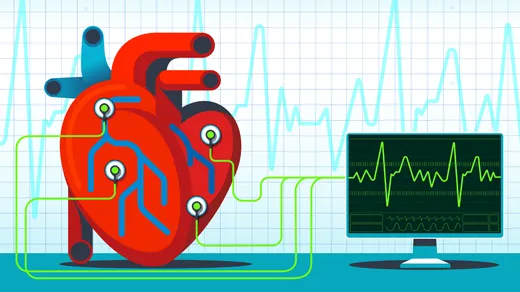Arrhythmias, a condition characterized by irregular heart rhythms, pose significant challenges to the medical community. While conventional treatments have shown limited success, there is growing interest in exploring alternative approaches that leverage the principles of math and physics. However, it remains uncertain whether these disciplines can truly offer a breakthrough solution for arrhythmic hearts.
An Unsettling Proposition
The idea of employing math and physics to address arrhythmias may seem perplexing at first glance. After all, how can abstract concepts such as equations and forces possibly influence the intricate workings of our cardiovascular system? Skepticism surrounds this unconventional approach due to its departure from traditional medical interventions.
Nevertheless, proponents argue that understanding the electrical activity within the heart through mathematical models could provide valuable insights into arrhythmia mechanisms. By analyzing complex patterns using computational algorithms and statistical techniques, researchers aim to identify potential triggers or abnormalities contributing to irregular heart rhythms.
A Calculated Approach
In recent years, advancements in technology have allowed for more sophisticated modeling techniques that simulate cardiac behavior with greater accuracy. These simulations enable scientists to explore various scenarios virtually before implementing any physical intervention on patients.
Moreover, physicists are collaborating with cardiologists to develop innovative treatment strategies based on their shared expertise. For instance, electromagnetic fields generated by external devices could be utilized alongside medication or invasive procedures like ablation therapy – an approach known as electrophysiology-based therapies.
A Cautious Outlook
While these novel approaches hold promise for addressing arrhythmias comprehensively, caution must prevail when considering their implementation in clinical practice. The human body is an incredibly complex system influenced by numerous factors beyond mathematical equations or physical laws alone.
Furthermore, the efficacy and safety of math- and physics-based interventions must be rigorously tested through extensive clinical trials. It is crucial to ensure that any potential benefits outweigh the risks associated with these unconventional approaches.
In Conclusion
The intersection of math, physics, and medicine presents an intriguing avenue for exploring new possibilities in arrhythmia treatment. However, skepticism persists regarding the feasibility and effectiveness of such approaches. As researchers continue to delve into this uncharted territory, it is imperative to approach these alternative solutions with a critical mindset while prioritizing patient safety above all else.

